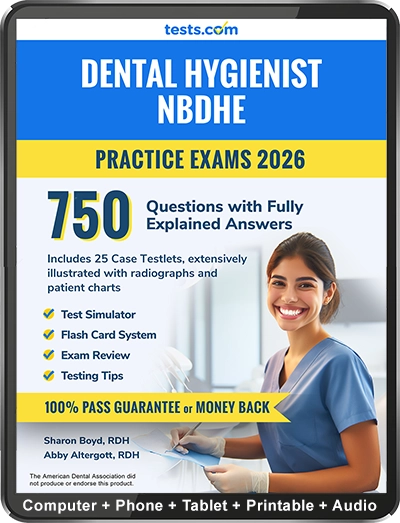2026 Edition
NBDHE Dental Hygienist Practice Test
Study Online Instantly

Click to Save 50% Now
2026 Edition

Take this free NBDHE practice test to study for a dental hygienist certification exam.
Dental hygienists must be licensed in their state to work as a dental hygienist. To get licensed, dental hygienists must meet certain education requirements and pass the National Board Dental Hygiene Examination (NBDHE). The NBDHE Dental Hygienist exam has 350 questions and has two components - Discipline Based section and Dental Hygiene Patient Cases. The first component covers the following main exam sections: Scientific Basis for Dental Hygiene Practice; Provision of Clinical Dental Hygiene Services and Principles of Community Health and Research. The second component consists of patient cases covering both adults and children.
For complete practice, check out the NBDHE Practice Exam Kit with 750 questions and fully explained answers, including 20 Patient Case Testlets. It is written by experts and instructors in dental hygiene. Our interactive test platform allows you to simulate the exam. Take as many practice tests as you need. There's no time limit or recurrent charges.
For more information on the NBDHE and test prep, see the NBDHE Study Guide.